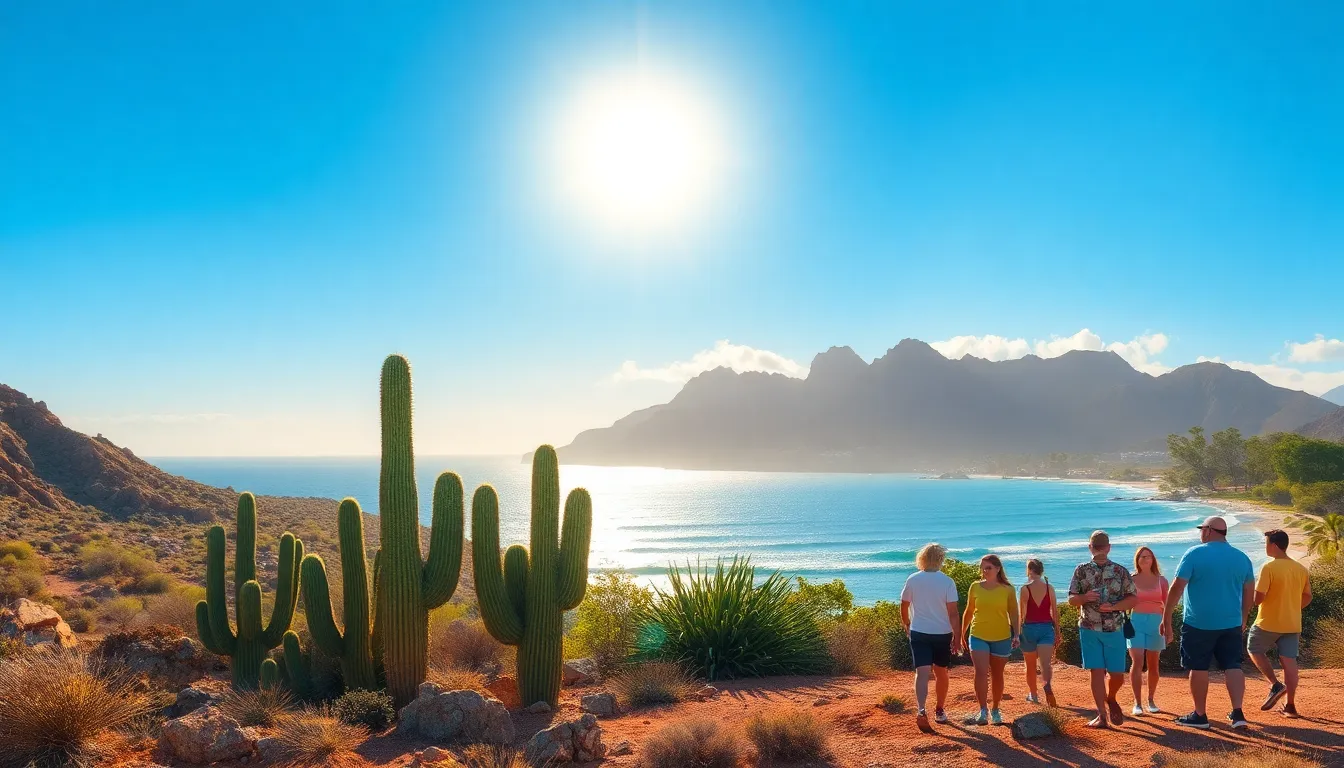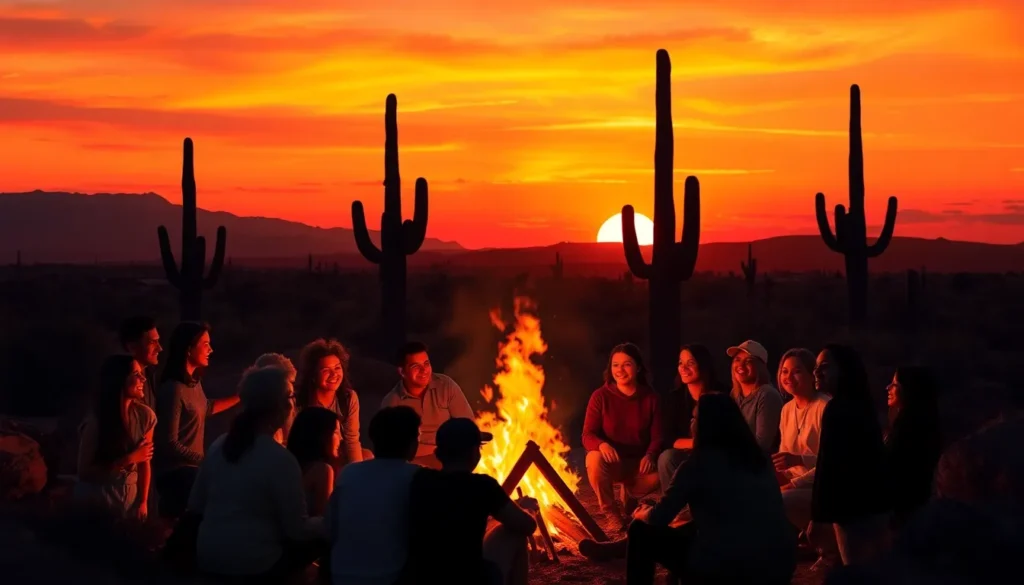As spring rolls in and clocks spring forward, many people find themselves in a love-hate relationship with daylight saving time. While some relish the extra evening sunlight, others dread the lost hour of sleep. But what if they could skip the whole time-tinkering ordeal altogether? Believe it or not, a few states have chosen to dodge this annual ritual, opting for a more straightforward approach to timekeeping.
In this article, we’ll uncover the states that have bravely stood against the tide of daylight saving time. From the sun-soaked shores of Hawaii to the rugged landscapes of Arizona, these states have decided that life is too short for clock confusion. So grab your favorite beverage, kick back, and let’s dive into the world of time zones that don’t play by the rules.
Table of Contents
ToggleOverview of Daylight Savings Time
Daylight Savings Time (DST) involves moving clocks forward one hour in spring and back one hour in fall. This practice aims to make better use of daylight during the longer days of summer. Many enjoy the additional evening light, which can enhance outdoor activities and reduce energy consumption.
Despite its advantages, DST presents challenges. Losing an hour of sleep can disrupt routines, leading to health concerns. Adjusting to the time change often results in fatigue and decreased productivity immediately following the switch.
Not all areas follow this practice. Hawaii and Arizona, for example, don’t observe DST, opting instead for a consistent time throughout the year. Residents in these states appreciate routine stability without the disruption caused by clock changes.
Other states and territories have also debated the necessity of DST. Some explore potential legislation to adopt a year-round standard time. This movement seeks to eliminate the biannual clock adjustment, reflecting a growing preference for uniform timekeeping.
Public attitudes toward DST vary. Individuals express mixed feelings about whether the benefits outweigh the drawbacks. Some advocate for abolishing the shift altogether, while others cherish the longer summer evenings.
Ultimately, discussions around DST continue as communities evaluate its impact on daily life. The trend towards adopting consistent time practices may gain traction as more regions reassess the effectiveness of Daylight Savings Time.
States Without Daylight Savings


Some states choose not to observe daylight saving time, valuing consistency over seasonal clock changes. Each state has its reasoning and approach to this issue.
Arizona
Arizona does not participate in daylight saving time due to its extreme heat. The state opts to maintain a constant time throughout the year, helping residents avoid the unnecessary heat during evening hours. Most areas in Arizona, including popular cities like Phoenix and Tucson, stay on Mountain Standard Time. The only exception is the Navajo Nation, which does observe DST. By remaining on standard time, Arizonans enjoy stable scheduling all year, making daily life simpler.
Hawaii
Hawaii also opts out of daylight saving time, prioritizing year-round time consistency. This decision stems from the state’s geographic location near the equator. As a result, daylight hours remain relatively stable throughout the year. Residents appreciate the lack of time changes, allowing them to enjoy outdoor activities without the disruption of setting clocks forward or back. Cities like Honolulu and Hilo benefit from unified scheduling, enhancing community interactions and tourism.
U.S. Territories
Several U.S. territories also do not observe daylight saving time. American Samoa, Guam, Puerto Rico, and the Virgin Islands maintain standard time year-round. The warm climate in these territories contributes to this decision, as extended daylight hours don’t provide the same benefits experienced in mainland states. Residents in these areas enjoy simpler timekeeping without the confusion of springing forward or falling back. Consistent time helps harmonize schedules and boosts community engagement among residents.
Reasons for Not Observing Daylight Savings
States that opt out of daylight saving time each have specific reasons tied to their unique circumstances.
Historical Context
Historical decisions heavily influenced a state’s stance on daylight saving time. Hawaii never adopted DST due to its consistent climate and daylight patterns, remaining on standard time since 1967. Arizona followed a similar path, though it had briefly participated in DST during the 1970s. Authorities in these states recognized that time changes provided little benefit, considering their geographical advantages. Communities often embrace stability, leading states like Hawaii and Arizona to prioritize traditional timekeeping.
Economic Considerations
Economic factors play a critical role in decisions against daylight saving time. Arizona, for instance, avoids DST to minimize energy costs associated with extreme temperatures; residents experience less strain from summer heat. Studies consistently show that regions not observing DST experience fewer disruptions to business hours and workplace productivity. Economically, stability in timekeeping promotes better planning for businesses, enhancing local economies. These considerations lead to discussions about the potential for year-round standard time across various states, reflecting a growing recognition of timekeeping’s impact on economic efficiency.
Impact on Residents and Businesses
Residents in states without daylight saving time (DST) experience a consistent daily rhythm. Living in Hawaii and Arizona, people benefit from the stability in their schedules, avoiding the biannual clock change that disrupts sleep patterns. Maintaining a regular routine supports mental health, helping individuals manage their lifestyles more effectively.
Businesses also find advantages in states that do not observe DST. Operating without time changes allows for predictable working hours, enhancing productivity. Employers in Arizona report improved employee morale and reduced confusion concerning scheduling and meeting times. This stability promotes better planning, facilitating coordinated efforts across various sectors.
Energy costs often show a decrease in states that eliminate DST. By avoiding time adjustments, residents enjoy more balanced energy consumption throughout the year. The warmer climate in Arizona, for example, allows businesses to optimize energy use by aligning work hours with natural daylight.
Community engagement often rises when standard time prevails. Consistent timekeeping fosters social interactions, giving residents more opportunities to participate in local events and activities. Hawaii’s stable daylight hours directly contribute to well-attended outdoor events, enhancing community bonds.
Debates around DST continue in various regions. The ongoing discussions increasingly favor a permanent standard time, with public sentiment trending towards minimizing disruption. Legislative efforts in several states aim to explore the benefits of adopting a consistent timeframe, addressing the needs of residents and businesses alike.

